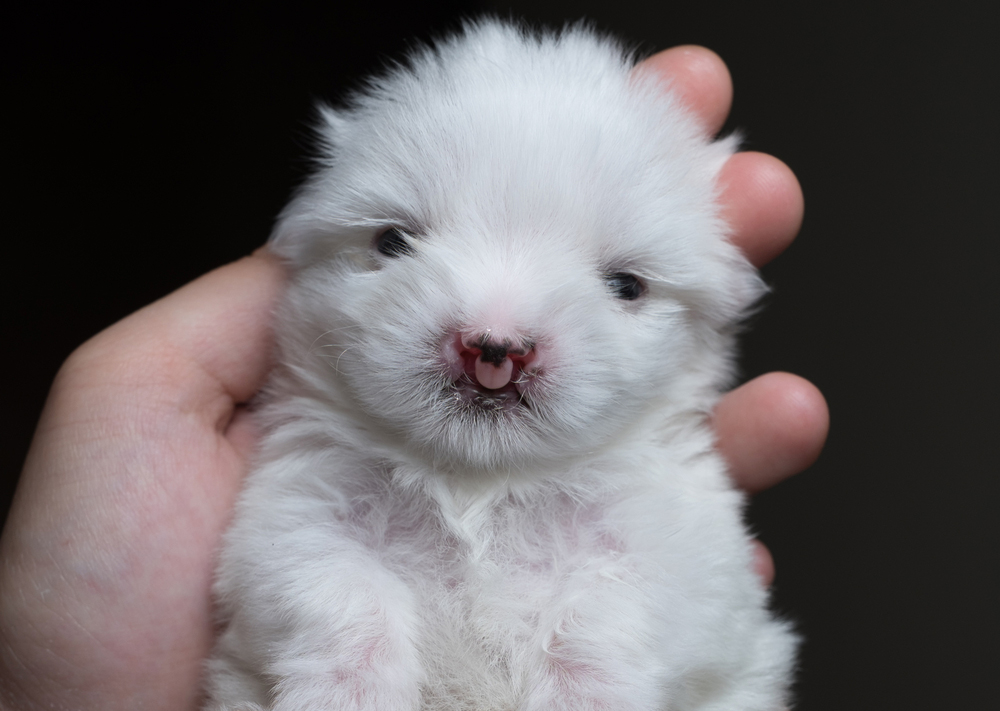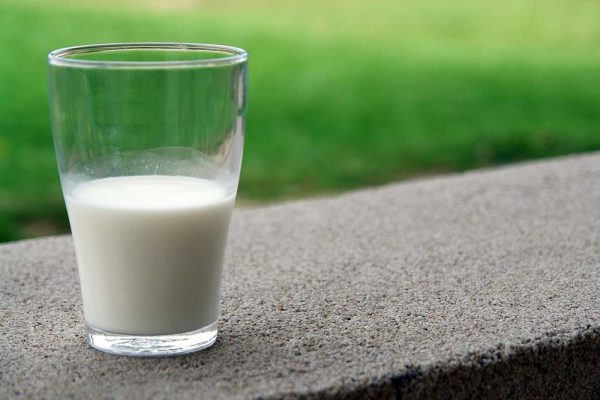In this article
If you’re expecting a litter of pups, one thing you might be worried about is birth defects. Birth defects, also known as congenital diseases, can be caused by a pup’s genetics inherited from the parents. An interruption of normal development during gestation can also occur with exposure to teratogens like medications, toxins, or infections. Of course, luck and chance also play a role, and sometimes these things are unavoidable.
Listing all of the thousands of possible birth defects here is not possible, but we will mention a few common ones. 0.2–3.5% of dogs could be born with a congenital problem, so if you’ve experienced that sinking feeling when one of your pups doesn’t look quite right, you’re not alone.
Depending on the problem, your pup could live a full life. Unfortunately, sometimes nature is cruel, and the pup cannot survive or have a good quality of life despite efforts to help them.

Prevention of Birth Defects
Prevention of birth defects is not always an exact science, but health screening parents and keeping the mother healthy during pregnancy can reduce the risk. Knowing the health issues your breed is prone to and what tests should be done before breeding is essential. If you’re not sure, a veterinarian is an excellent place to examine your dogs for potentially inherited issues, as well as advice about which genetic and health screening tests should be performed.
Keeping the mother healthy involves making sure all her preventative health treatments, like vaccinations and de-worming, are up to date prior to breeding. She should be fed a high-quality, balanced commercial diet to avoid nutritional deficiencies. Before the last trimester of pregnancy, she will need to slowly transition onto a diet suitable for the gestation/lactation stage 1. Avoid giving her raw food that can be contaminated with pathogens.
You should not vaccinate the mother while pregnant, and ideally, any medication administered will have been proven safe during pregnancy. Make sure she can’t access any toxins and don’t take any risks with her health, including isolating her from dogs potentially carrying infectious diseases. Mother dogs over the age of 7 have a higher risk of birthing puppies with malformations, so you should also consider the age of the female when thinking about breeding pups.
If you need to speak with a vet but can't get to one, head over to PangoVet. It's our online service where you can talk to a vet online and get the advice you need for your dog — all at an affordable price!


The 10 Common Puppy Birth Defects
When your mama dog starts her labor, tiny pups with the cutest little noses and toes start appearing one by one, and a few weeks of hard work begin. You must weigh the pups and regularly check them for congenital problems. Here are a few of the most common defects to watch out for.
1. Hernia
| Body Part(s) Affected: | Body wall, abdominal organs |
| Treatment: | Surgery |
Hernias occur when a hole in a body wall allows some of the internal fat or organs to protrude. A hernia at the umbilicus is the most common type of hernia; it looks like a lump at the pup’s belly button. If the hernia is small, they are often left alone until a desexing surgery, when it has either resolved or is surgically repaired.
Inguinal hernias occur in the groin area and there are also internal hernias that are usually not noted until the puppy starts showing signs of illness. Severe hernias that involve organs like intestines protruding through can end up strangulating them and become life-threatening. This is why a more proactive approach to repairing hernias is recommended for severe cases.
2. Cleft Palate
| Body Part(s) Affected: | Mouth |
| Treatment: | Supportive care, surgery |
If you open a puppy’s mouth, you can see the hard palate at the root of the mouth. This usually is uniform with ridges. In pups with cleft palate, the hard palate is split in two with a fissure down the midline. Unfortunately, the fissure allows milk into the nasal passages during feeding, which can lead to the pup inhaling the milk and aspiration pneumonia, which is a leading cause of death in puppies.
Sometimes these pups will have a harelip as well as a cleft palate. Other signs of cleft palate include poor growth, sneezing, and coughing. A cleft palate can be inherited from exposure to teratogens such as the antifungal griseofulvin. If your puppy has a cleft palate, they will need special care under the guidance of a vet before having corrective surgery around 6–9 weeks of age.

3. Atresia Ani
| Body Part(s) Affected: | Rectum, anus |
| Treatment: | Surgery |
In the developing fetus, the anus is initially covered with a membrane which, over time, opens as the anus and rectum develop. In puppies with atresia ani, the membrane is completely or partially intact, meaning the opening is either narrowed or non-existent.
The pups will either be constipated and strain to defecate or be unwell and unable to defecate. Other signs could include a bloated abdomen, crying, and vomiting. For these puppies to live a normal life, they need special X-rays and surgery to correct the issue.
A vet will be able to advise you on the best course of action to ensure the well-being of your pet.
Did you know you can speak to a veterinarian without having to travel? Just head over to PangoVet. It's our online service where you can talk to a vet online and get the advice you need for your pet — all at an affordable price!
4. Heart Defects
| Body Part(s) Affected: | Heart |
| Treatment: | Sometimes surgery |
Among the most common heart malformations are pulmonic stenosis and patent ductus arteriosus (PDA); however, there are other conditions, like heart wall defects, that can cause issues, too. Typically, pups with heart problems will have heart murmurs due to the abnormal flow of blood in the heart.
In pulmonic stenosis, the heart valve that releases blood toward the lungs is narrowed because the leaflets of the valve are thickened or fused together, making it difficult for blood to move into the lungs. Depending on the severity, pups can live a normal life, but those who show signs of heart disease like collapse, lethargy, and heart failure will need life-saving surgery.
PDA is another birth defect that causes a heart murmur. In fetal development, a vessel sits between the aorta and the pulmonary artery, which allows blood to bypass the lungs. This vessel is no longer helpful in newborn pups, and normally, it closes just after birth.
In dogs with PDA, this vessel doesn’t close, which can lead to signs of heart disease. Chihuahuas and German Shepherds are prone to the condition, and it typically needs to be corrected with surgery.

5. Cryptorchidism
| Body Part(s) Affected: | Testicles |
| Treatment: | Surgery |
Cryptorchid dogs are males whose testicles don’t descend. Since male pups are born with undescended testicles, you won’t notice this condition immediately. However, between 8 and 16 weeks, their testicles should migrate from the abdomen, through the groin, and into the scrotum.
In pups whose testicles do not reach their destination, they can be found anywhere from the abdomen to the groin. Breeding cryptorchid dogs is not recommended, as the condition can be inherited. The dog is usually neutered, with both testicles removed, to prevent complications like cancer or torsion of the testicle.
6. Dermoid Sinus
| Body Part(s) Affected: | Skin, spinal cord |
| Treatment: | Sometimes surgery |
In the embryo, the nervous system and skin initially arise from the same layer and are connected early in development. This layer, called the ectoderm, folds in on itself to form the spinal cord. In normal pups, the spinal cord becomes completely separate from the skin.
However, a dermoid sinus occurs if these layers don’t separate properly. This means there is a cavity underneath the skin, which can be shallow or, in severe cases, connect to the outer layer of the spinal cord. Signs could include an opening on the midline of the back, discharge, and, in severe cases, neurological signs like a wobbly gait or poor reflexes due to infection in the nervous system.
Rhodesian Ridgebacks are the typical breed in which this occurs. Sometimes, surgical treatment is necessary, but the prognosis is good if no neurological signs are present.

7. Swimmer Puppy
| Body Part(s) Affected: | Limbs |
| Treatment: | Physiotherapy, supportive care |
Swimmer puppies are aptly named for their inability to stand up due to abnormalities in the legs of unknown cause. They have flat, splayed-out legs and move by moving their legs in a swimming motion. This is usually first noted around 2-4 weeks of age when dogs would normally start becoming more mobile.
As they spend much time on their chest, their chest can become abnormally flattened, which can lead to secondary respiratory issues in some cases. If they receive treatment to strengthen their muscles before 4 weeks old, the prognosis is fair. Interventions to help these puppies include splints, massages, exercises, and supportive care at home.
8. Polydactyly
| Body Part(s) Affected: | Toes |
| Treatment: | Usually none |
Polydactyly refers to puppies born with extra digits, commonly on the inside aspect of the paws. The result can be dogs with multiple dewclaws, which in the Great Pyrenees is very common and part of the breed standard. Extra digits can occur elsewhere on the foot but are less common.
The digits can also be fused by the bone or soft tissue, which is caused by syndactyly. Dogs with extra or fused digits don’t show many problems from their condition. Extra digits are slightly predisposed to injury, and the nails must be kept short. In rare cases, they may need to be surgically removed.

9. Hydrocephalus
| Body Part(s) Affected: | Brain, skull |
| Treatment: | Medical or surgical |
Congenital hydrocephalus is caused by structural abnormalities that prevent cerebrospinal fluid from draining from the brain and is common in small-breed dogs. As the fluid accumulates in the brain, brain tissue is lost, and the pressure in the skull rises.
Affected pups can develop an enlarged skull to accommodate the pressure. Neurological signs like blindness, circling, seizures, and poor cerebral function can be noted. Untreated, it can be fatal. Medical treatment or surgical intervention can be recommended on a case-by-case basis. Pups often do well if surgery is performed before major brain damage has occurred.
10. Microphthalmia
| Body Part(s) Affected: | Eyes |
| Treatment: | Lifestyle changes |
When pups open their eyes at 10–14 days, sometimes a puppy could show an undersized eye(s), which can become more noticeable with age. This condition is known as microphthalmia and is often accompanied by other eye defects. Sometimes, dogs can see out of the eye, although their vision is usually impaired. Many are blind in the affected eye(s). The condition has multiple causes but is hereditary in Soft Coated Wheaten Terriers and Collies with Collie eye anomaly.
Vitamin A deficiency can also cause the condition. There is no cure for microphthalmia, and it can’t be reversed. Owners of these dogs will have to make some adjustments, including walking them on a leash, training verbal commands, minimizing hazards, and not moving furniture in the house.

Conclusion
Now, you know a few things that can go wrong in the process of birthing puppies. While some problems are outside your control, not breeding from dogs with congenital or genetic diseases, proper nutrition, and keeping the mom healthy can go a long way toward a healthy batch.
Make sure to check up on your pups regularly and have them vet-checked, too, as some problems are not immediately apparent. We hope your puppies turn out perfect and go on to live full, healthy lives!
Featured Image Credit: Anna Krivitskaya, Shutterstock



















2 Responses
What if the puppy is missing the outside of its ear and their vet said the inside is normal?
Thanks for your question, Ladolf! If the puppy was born missing the outer part of the ear (also known as the pinna), but the vet has confirmed that the inner ear structures are normal and healthy, that's actually a great sign. It likely means your pup can hear normally—or at least has functional hearing—on that side.
This kind of congenital condition often doesn’t impact a dog’s quality of life. That said, it's still a good idea to keep an eye out for any signs of ear infections or hearing issues as your puppy grows. Since the outer ear helps protect the inner ear from debris and infection, some extra care may be needed. It’s also important to make sure the area is protected from sun exposure and other external elements.
If you have any concerns or just want peace of mind, feel free to connect with one of our qualified veterinarians. They can help answer any questions you have and create a personalized care plan for your pup. You can schedule a video consultation with our team anytime at https://pangovet.com. I hope this helps! 🙂